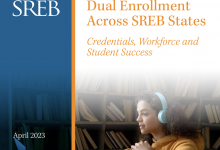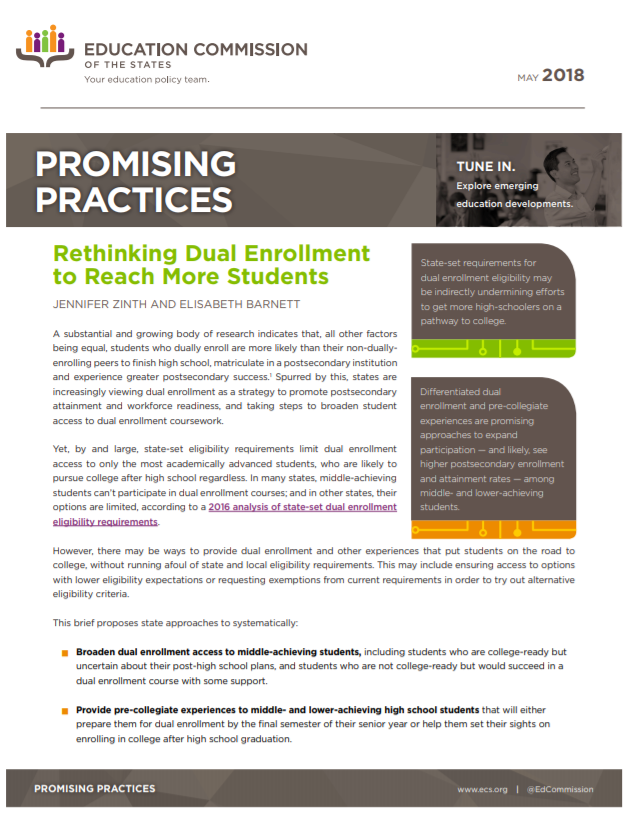Dual enrollement allows students to obtain college credit in high school while meeting high school graduation requirements. In many states, only the most academically advanced students are able to access dual enrollment oppurtunities due to state-set eligibility requirements. This report from the Education Commission of the States discusses state approaches that systematically broaden dual enrollment access and provide pre-collegiate experiences to middle-and lower-achieving students. Such strategies include permitting dual enrollment programs to offer developmental coursework, investing in career pathways programs, and offering student success and college-ready courses in high school.This report examines extant research and explores state examples to demonstrate how policymakers in other states might increase access to dual enrollment options for more students.
Dual Enrollment, Articulation and Transfer
This report summarizes the work of the SREB Dual Enrollment Initiative to date, lays out its agenda for 2023,…






